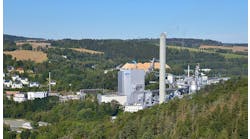From the Editors of CONTROL
Dr. Raja Amirthalingam of the Air Liquide Research and Technology Center, in Newark, DE, described to the crowd at the Matrikon Summit 2007, a pilot program at Air Liquide using the Tai-Ji modeling algorithms for closed-loop modeling. The goal of the progam for using advanced controls in MVPC implementations at more than 50 air separation units at Air Liquide facilities worldwide was three-fold.
The company wanted to reduce energy consumption by improving secondary fuel (off-gas) utilization and reducing flaring; improving reliability by reducing the variability in certain critical variables; and improving operational efficiency by smoothing production rate transitions and reducing deviations from mean values by means of continuous multivariable regulation.
In order to achieve these goals Air Liquide needed a better modeling tool and less disruptive testing methods. It tried out the closed-loop modeling tool from Tai-Ji in a pilot program at the HyCO plant. The eleven-hour test made changes to a temperature controller in step sizes in open-loop mode. The purpose of the test was to identify the models and start commissioning the controller and re-identify the models in a closed loop.
Lessons learned from the test included the fact that using the Tai-Ji tool meant that less attention was needed for modeling during the tests. The tool also had the flexibility to adapt for bad data for certain sub-matrices. There was a fairly low knowledge requirement for using the tool during testing.
On the down side, the model data sometimes had to be manually exported to the GMaxC MVPC system, and configuration required a higher level of expertise.
As a result of the implementation, Air Liquide found reduced variations in the methane slip and energy consumption. The Air Liquide amine system was also remodeled under closed-loop conditions to update the models, and Tai-Ji is being evaluated for use in other Air Liquide plants.
In a second presentation, Mike Tyrrell, PIMS Manager for IneosChlor Vinyls, Cheshire, U.K., talked about implementing an alarm management program to maintain uptime reliability at both new facilities and 30-year-old plants with limited manpower.
In 2006, a new membrane chlorine unit was brought online to replace part of mercury-based cellroom capacity which dated from 60s-70s. This unit and three existing ones are now all controlled from a centralized control room for more effective site operation. The system runs on Emerson DeltaV DCSs and AspenTech IS21 data historian. Neither of these systems could deliver alarm management on the scale required.
The challenges to implementation included U.K. government requirements to meet EEMUA guidelines before reducing the head count at the site and the need to answer insurance company requirements about alarm management methods for the new plant. The company is also under an internal mandate to achieve world-class manufacturing standards. Finally, the site was facing a hard deadline of May 2007 for completing the project.
Ineos installed Matrikon’s ProcessGuard with web reporting at the site in late 2005. The system is currently logging events from 12 DeltaV systems and one SCADA. It is also working with Matrikon to handle alarm management at the older plants that were refitted with DCSs six years ago.
At the older plants, there has been a visible improvement in alarm performance, but the changes have taken many months, because of the difficulty of implementing the changes and the significant risk of major site disruption. Issues such as finding the time to re-assess each alarm priority and the associated paperwork slowed things down. It took eight to ten weeks to get all work done.
The main challenge remains the fact that too many alarms are configured in the highest priority. “We’re doing better against the EEMUA guidelines, but it’s still a problem,” says Tyrrell.
The company also discovered significant problems with its smart fieldbus instruments. “They’re happy to tell you their state of being all the time and their opinion on everything,” says Tyrrell, but that does nothing to reduce the number of alarms that have to be managed.
Finally the company settled on daily and weekly reviews of the Top 20 alarms in operating areas and agreed on a primary measurement target of an average alarm rate per operator. Many of the same alarms appear from report to report, because it takes more than a week to address the re-engineering of the alarms.
It still requires approximately 15 man-hours a week of commitment from the plant to manage the alarms.
Resolving alarm management problems requires one or the more of the following processes, says Tyrrell: repairing faulty instrumentation, revising alarm limits post commissioning, and implementing automatic alarm suppression.
Successful alarm management also requires long-term, sustained effort across a range of engineering disciplines and buy-in of everyone from site management to operator, as well as fast and accurate statistical reporting to target resources for best effect.
|
Matrikon Equipment Condition Monitor — Predict and Prevent Equipment Failure |




